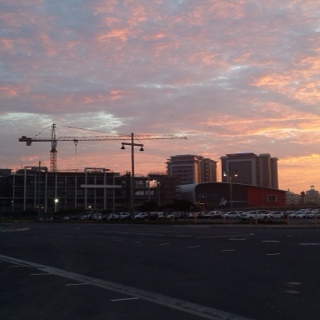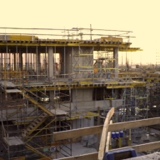Information
-
Document No.
-
Audit Title
-
Client / Site
-
Conducted on
-
Prepared by
-
Location
-
Personnel conducting field review
-
Contract Company Observed
Isolation of Hazardous Energy
-
Verify the work has to be done while portions of the operating unit are still in service (Can the work wait until the unit is safely shutdown)?
-
Energy isolation requires a specialized work permit (energy control plan worksheet), Is there one in place?
-
Has the crew reviewed the permit and understand the hazards associated with the work?
-
Are personnel performing the isolation of hazardous energy trained and competent in the roles for which they are responsible?
-
Are all energy sources identified and isolated?
-
What hazards are associated with LOTO (isolation of hazardous energy) and have appropriate steps been taken to mitigate the hazards prior to the beginning of work?
-
Has de-energization been verified before work begins?
-
Have positive energy isolation techniques been used where vessel entry or open flame hot work is required?
-
Are all isolation points locked, tagged and documented?
-
Does each personal lock / tag used for energy control only identify and are used by a competent / approved individual?
-
How do you advise different work crews that the equipment is out of service and detail any safety or operational precautions to be undertaken?
-
Have operations and maintenance personnel reviewed the energy isolation that has been done on the system?
Electrical
-
Are cords and plugs inspected daily before use and tagged appropriately?
-
Has the equipment been de-energized and verified before starting work?
-
Are power tools grounded or double insulated and GFCI's in use?
-
Are electrical tool NOT used where gas or fuel vapors exist in the atmosphere?
-
Are cords NOT damaged or patched with tape?
-
Is care taken to ensure cords do not lay / rub against sharp edges, doorways, stairwells, walkways and in water?
-
Personnel do NOT use electrical equipment in wet conditions and areas?
-
Are electrical tools being used in confined spaces between 12 and 120 volt maximum?
Permit To Work
-
Have personnel assigned PTW roles been trained in those roles and do they appear competent in those roles?
-
Is it clear that the same person cannot act as Permit Issuer, Permit Approver or Permit Requester / holder at the same time?
-
Is the approved Permit to Work available at the job site or prominently displayed?
-
Are the permits properly filled and valid (date and signed by authorized personnel)?
-
Are approved specialized work permits (hot work, excavation, confined space, etc) available / displayed at the job site?
-
Was a hazard analysis (JSA) completed during the planning of work and did workers discuss the JSA prior to starting work?
-
What precautions and safety measures been put in place to conduct work safely and mitigate risks?
-
Have steps needed to prepare the job site / equipment for the start of work, as noted on the permit to work, been completed satisfactorily?
-
Has communication to all affected people been completed
-
What changes could happened in this activity that would cause you to use a SWA?
-
Has the permit in use been expired (does the permit need to be re-validated)?
-
Crew understand the conditions for work stoppage or permit cancellations?
-
Is it understood that the permit requester \ holder must return the permit and related documents to the responsible Permit issuer at the completion of work?
Job Safety Analysis
-
Is there a JSA at the job site?
-
Can you give me a few examples of hazards listed on the JSA?
-
How have the identified hazards been communicated and mitigated?
-
Are the people present knowledgeable in identifying the hazards associated with the work and the work area?
-
Has the work crew signed off on the JSA?
-
Have environmental conditions such as location, light, noise and weather been considered in performing the work?
-
Have job specific emergency / rescue plans been considered?
-
Have the steps in the JSA identified each potential hazard and steps to mitigate those hazards?
-
If the job has not been completed and the same JSA is used, has it been updated and signed off again?
-
Will you review the JSA with other work crews who come on site during work?
-
Is the JSA reviewed and signed by personnel new to the task location upon arriving at the ongoing work location?
Hot Work
-
Can the work be conducted without performing hotwork?
-
Is there a Hot Work Permit at the job site and has it been signed by the Permit Approver and the work team leader?
-
Have hazards associated with isolation of hazardous energy bee identified and mitigated prior to beginning work?
-
Are personnel performing the work competent in the roles for which they are responsible?
-
Has the qualified gas tester / chemist determined the frequency of gas testing based on the potential risk?
-
Is a fire watch present at the work activity and monitoring the work? (except in designated hot work areas like welding areas, etc)
-
If work was interrupted by a Stop Work Authority, weather conditions, alarms or unforeseen dangerous conditions, were the conditions re-evaluated and was the Hot Work permit revalidated before work was restarted?
-
Do personnel performing the work understand that hot tapping requires subject matter expert input, written procedures and a high level of management approval?
-
Have sources of ignition that could come into contact with sources of fuel been identified and risks mitigated?
-
Is all the required fire suppression equipment on site, operable and service in date?
-
Are barriers between hot work and sources of fuel adequate and maintained?
-
Are welding shields or physical barriers provided to protect nearby workers?
-
Is a fire blanket or spark containment device available at work site and used when necessary?
-
Are areas below welding / burning / cutting barricaded and clearly demarcated?
Working At Heights
-
Has the responsible person considered if the work can be done at ground level instead of at heights?
-
Have hazards been associated with Working at Heights been identified and mitigated prior to beginning work?
-
Are personnel protected from fall by either fall prevention (guardrails etc) or fall protection systems that are n place (safety harness etc) and are sufficient?
-
Are the people performing work competent in the roles for which they are responsible for?
-
Are workers wearing fall-arrest equipment NOT working alone and using 100% tie off?
-
Are rescue personnel and equipment available (either on site or on call) and audit able records available of turnaround times?
-
Working at heights greater than 6' is a high risk - was a JSA completed and reviewed with all members of the work crew and is a Permit to Work on site?
-
Are all persons working at height trained in the proper use, maintenance and inspection of the equipment they will be required to use?
-
Are workers using full body harness and not safety belts?
-
Was the ladder inspected prior to use and have a load rating sticker?
-
Are ladders on secure footing, tied off to prevent sliding, or is someone helping by holding the ladder?
-
Are ladders being used properly? (4:1 angle, ladders accessing a roof or other area extend at least 3' above the point of exit. Working within 6' of leading edge requires 100% tie off.)<br>
-
Are ladders being stored properly (secured to wall if stored vertically)?
Confined Space Entry
-
Can the work be done without entering the confined space?
-
Is there a PTW and Confined Space Entry permit at the job site (has it been signed by the permit requester / holder and permit issuer)?
-
Have the hazards associated with the confined space been identified and mitigated prior to beginning work?
-
Has a qualified gas tester / chemist performed gas testing for entry into confined space?
-
Is a rescue plan in place and understood by the rescue personnel and the personnel working in the confined space?
-
Do entry watch personnel understand they should never attempt to enter a confined space, even in an emergency, until help arrives?
-
Do rescue personnel have the correct rescue equipment at the work location?
-
Is the entry log up to date and maintained?
-
Are provisions made for a qualified entry guard to be on site at all times when personnel are in the confined space?
-
Is the confined space secured and flammable gas sources removed whenever the confined space is left unattended for any period of time?
-
If the work will take longer than a single shift, how will the shift turnover process communicate the status of the equipment being worked on?
-
Is there a clear communication plan in place?
-
Have workers been trained in CONFINED SPACE ENTRY?
-
Have workers reviewed the JSA and understand the risks?
-
Is ventilation adequate to maintain safe atmosphere where workers are located?
Scaffolding
-
Scaffolds must be inspected and green or yellow tagged by a competent person before being put into use initially and prior to use or at the beginning of each shift.
-
Scaffolding must always be visibly tagged with one of three (green, yellow or red tag) types of scaffold safety tags affixed at each designated access point at eye level.
-
Tags must be filled out completely and affixed in a manner that effectively communicates the condition of the scaffold to workers following inspection?
-
Are scaffold users trained and competent in using the scaffold? Certification available?
-
Are work areas or walkways below scaffolds appropriately barricaded, demarcated and sign posted?
-
All scaffold work platforms must be equipped with guardrails. Guardrails must be installed before work (other than scaffold erection) is permitted to begin.
-
Are anchoring and bracing present to prevent scaffold from swaying, tipping or collapsing? Note: climbing on cross braces is prohibited.
-
Is there a safe and unobstructed means of access such as a walkway, stair or ladder (securely attached), provided to all scaffold platforms?
-
NO work maybe done on or from scaffold platforms during slippery or during storms or high winds.
-
Personnel working on, under or in close proximity to scaffolds must wear hard hats.
-
All work being performed on a scaffold platform must be conducted within the guardrails wherever possible, otherwise a personal fall protection system must be used.
-
Personnel must not extend their working height by standing on boxes or guardrails rather than on scaffold platform?
-
Personnel must not remove any components of a completed scaffold except under the direct supervision of a competent person?
-
An aerial lift spotter is required when personnel are elevated in an aerial lift in a high traffic area, when there is a potential for operator injury due to physical contact with facility systems or structures, and when there is a potential for damage to sensitive facility systems or structures.
-
Did the aerial lift operator conduct a pre-use equipment inspection following the instructions provided in the manufacturers operations manual?
Lifting and Rigging
-
Have hazards associated with lifting and rigging been identified and mitigated prior to beginning work?
-
Have competent personnel completed the steps needed to safely prepare the job site and equipment for the start of work?
-
Verify that lifting and rigging equipment as well as operators are certified for current use and that equipment is in good working order through a pre-use inspection.
-
What pre-planning was done prior to lifting and rigging?
-
Was a pre-use inspection of the crane performed?
-
Was the crane pre-use checklist completed properly? Is there a satisfactory monthly crane inspection checklist and is ir being used?
-
Ensure the load is securely placed in the lay down area and free of any support from the crane before rigging equipment being removed?
-
Is the crew familiar with the hazards around the job site (including other work that may be occurring at the same time)?
-
Have precautions been taken for lifts over operating equipment or facilities including power lines?
-
Are appropriate permits in place and accessible to the work crew? Has an appropriate JSA been completed?
-
Has the contractor provided documentation of crane operation radius and lift calculations for the job at hand (lifting plan)?
-
Does the crane have its certification and inspection records available?
-
Is the crane equipped with a safe working load (SWL) indicator such as light and siren?
-
Is the crane equipped with two anti-blocking devices?
-
Does the crane have a legible load chart which is located where the operator can see it?
-
Has the crane swing radius (cab, counterweight and boom) been properly barricaded to prevent unauthorized entry?
Personal Protective Equipment
-
Are hard hats worn (with the bill facing forward and square) in designated areas?
-
Is appropriate eye and face protection being worn (i.e. hard side shields, face shields. Goggles)?
-
Are personnel utilizing ear protection near and in noise zones?
-
Is appropriate footwear being worn (steel tip work boots / shoes)?
-
Is appropriate respiratory protection being utilized (dust mask with 2 straps are considered a type of respirator)?
-
Has the respirator wearer performed positive / negative fit checks and have a current fit test before starting work?
-
Appropriate clothing (I.e. long sleeves, long pants & coveralls)?
-
Are personnel wearing the appropriate gloves for their task?
-
Are personnel who are working over or close to water equipped with proper flotation devices?
-
Is PPE in good condition and made to recognized standards (ANSI, SABS, SANS, etc)?
-
Are personnel aware of proper inspection, use and care of all PPE?
Powered Industrial Vehicles
-
Are all drivers / operators properly certified and trained in the safe operation of vehicles and equipment?
-
Are maintenance programs in place?
-
Does every haulage vehicle and piece of heavy equipment have a working back-up alarm?
-
Are forklifts, trucks and other equipment NOT loaded above their designated safe carrying capacity or weight and secured?
-
Are seat belts provided on all vehicles and in good working order?
-
Vehicles and heavy equipment parked with parking brake set?
-
Are fire extinguishers fitted, regularly inspected and operational?
Barricading and Work Zone Entry
-
Have the barricade boundaries been established to form a safe perimeter around the hazard area to protect personnel working outside the boundary from hazardous conditions?
-
Has an alternative egress or path of travel been established if barricade blocks standard pattern of traffic flow (both pedestrian and vehicular traffic)?
-
Do emergency exits remain clear and not impacted by the barricaded area or, if barricade does impact an emergency exit, have alternative emergency exits been established and communicated?
-
Are barricade tags complete and affixed at regular intervals along the barricaded boundary?
-
Is lighting provided if required to illuminate the barricade boundary at night?
-
Have all necessary local permits been completed and filed with the local authorities as necessary if barricade will impact public roadway?
-
Are additional hazard communication signs in place?
-
Have hazards within the barricaded area been adequately communicated to personnel who will work within the boundary in order for them to safely perform their work tasks?
Hand Tools / Machine Guarding
-
Are personnel using the correct tools for the job?
-
Are appropriate guards in place and functional? Are tools properly guarded?
-
Are tools and equipment in good condition and undamaged?
-
Do personnel unplug / disconnect their power tools before changing parts or performing maintenance on the tool?
-
Do personnel secure their work with clamp or vice in order to keep both hands free to use the tools?
-
Are air hoses for pneumatic tools with mechanical connections secured with he appropriate pins or locking mechanisms / whip restraints?
-
Are high pressure hoses equipped with whip restraints attached to each side of mechanical conditions?
-
Is compressed air being used for cleaning at 30 psi?
ORIENTATION
-
Ask contractors in the field if they've received their site specific orientation.
-
Ask contractors what topics were covered in their site orientation.
-
Review random sampling of signature sheets from the orientation booklets for verification.
-
Ask staff augmentation contractors if they've received their site specific orientation
-
Ask staff augmentation contractors if they've received orientation
STANDARD OPERATING PROCEDURES
-
Is the SOP at the job site and is it relevant to the work being performed?
-
Are personnel performing the work following the instructions listed on the SOP?
-
Are personnel performing the work qualified to use the SOP?
-
Has the SOP been reviewed in the last 12 months and updated as necessary?
Field Review Acknowledgement and Sign Off
-
Was the GC health and safety representative present during the field review?
-
Name and signature of accompanying GC health and safety representative
-
Name and signature of field reviewer
-
Date and time of field review completion








